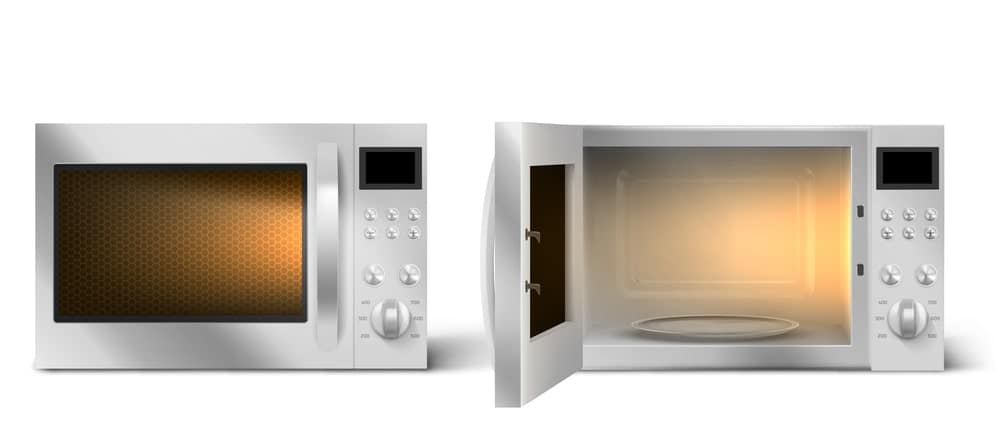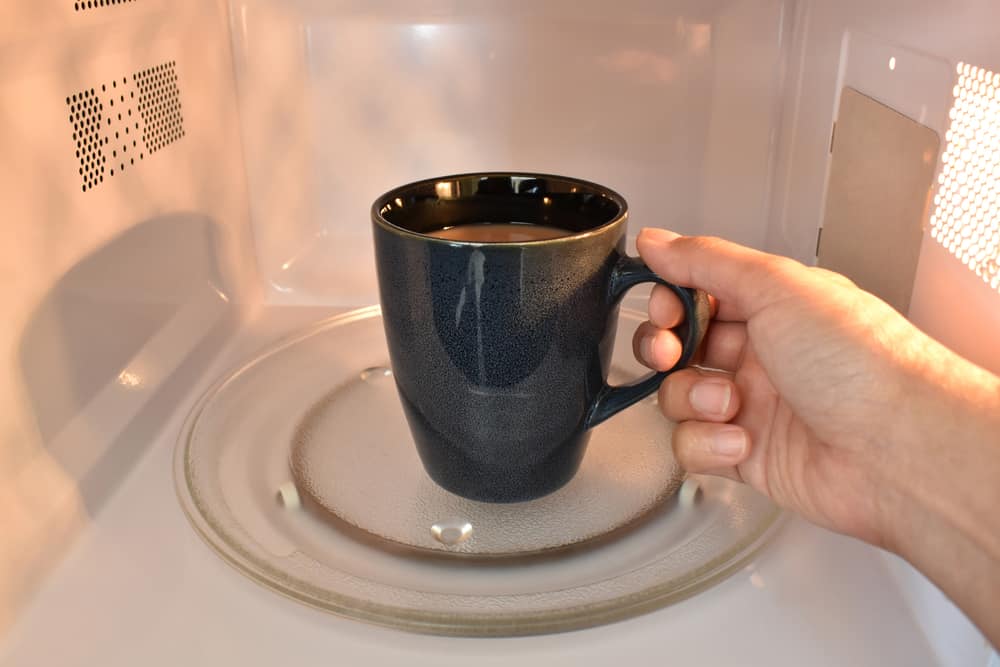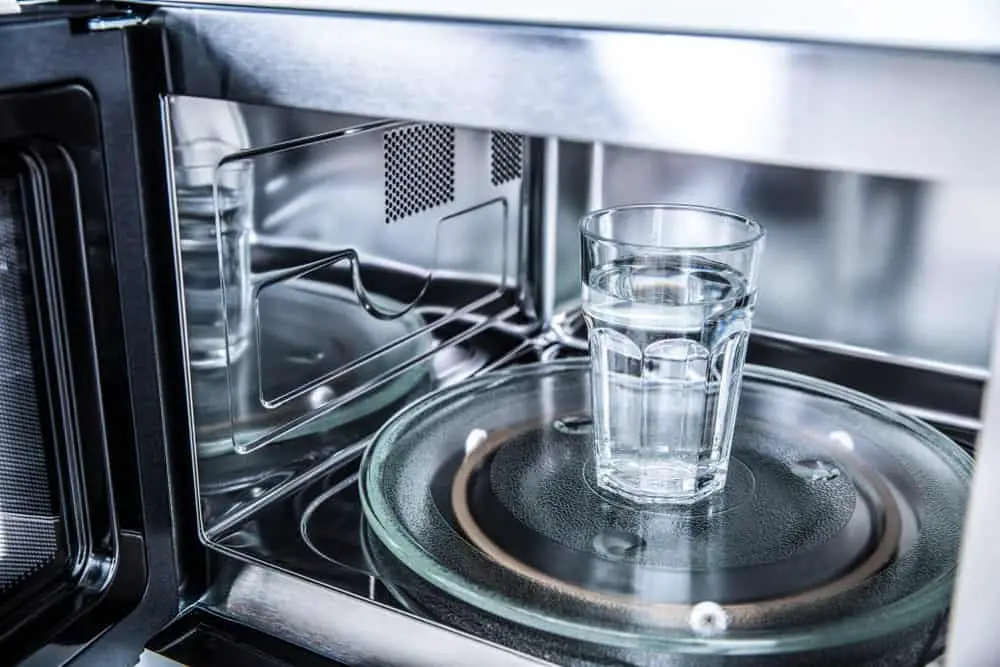Microwaves are no stranger to many households due to their ease of defrosting and reheating food and liquids, particularly coffee and tea. However, if you don’t want unexpected burns, you should always operate a microwave oven with caution.
Have you ever attempted to reheat a cup of coffee in the microwave? Do you find your coffee cup is too hot to hold or merely warm when you take it out? If the first applies, that mug may pose a hazard and be dangerous in the microwave. So, why do some mugs get hot in the microwave? Are all kinds of cups microwave-safe? Let’s have a look at the answers right in this article.
The Heating Mechanism Of The Microwave
While microwave ovens differ in style, size, and intended usage, the majority of them operate on the same basic principles.
Specifically, the magnetron functions similarly to a three-pole electrical light, amplifying microwave rays generated by an electromagnetic oscillator. The microwave photons from the magnetron will go to the diffusion fan in current through waveguides. The daily diffuser is normally placed above the top of the oven to disperse the microwave rays evenly. In the cooking chamber, these microwave beams are constantly bounced back and forth.

The moisture in the meals and beverages placed in the cooking chamber is heated. The heat from this water will be transferred to the rest of the thing that has been stored in the oven. The staff undergoes two phases of heating: microwave waves heat the water in the food, and the hot water distributes the heat to other areas of it, allowing the microwave to heat the food more quicker. As heat is created both within and outside the food or drink at the same time, it is several times more efficient than a regular stove.
Why Is Your Cup So Hot In The Microwave?
There are several reasons why your microwave cup is scorching. The most typical cause is that a ceramic material’s enamel is inadequately coated. In particular, some types of cups created by producers in unspecified nations do not adhere to correct enamel compositions. As a result, they frequently utilize cups that contain lead or other metals, which cause the cup to overheat in the microwave. It’s pretty tough to explain why this occurs. Perhaps some producers try to embellish their cups with these metals’ glazes without realizing the risks, or they probably just have no idea how to make the right enamel formula.
Having said that, this does not imply that all cups contain heavy metals. You should be aware that there are still a number of trustworthy manufacturers providing great cups that are suitable for use in microwave ovens.
However, whatever the cause, we should be cautious when purchasing a cup and always test it before using it in the microwave, even if it has the ‘microwave-safe’ emblem.

In addition to the above-mentioned reason, water or moisture entering the porous material of the cup is the second explanation stated by many individuals. Microwaves function by heating polar molecules in water or other substances such as fat, oil, sugar, and salt, as previously said. As a result, if there is no water in the cup, it will not be hot if heated in the microwave. How can water enter a porous substance, though? The reason is that friction has caused some small fractures or fissures in the glass enamel, allowing water to infiltrate the porous layer beneath.
Placing your cups in the dishwasher too often is one of the reasons why your cup soaks in much water. This might cause moisture to build up inside the porous material, making your microwave cup very hot.
To guarantee that it is safe to heat in the microwave, consider purchasing a glass or China coffee cup as these materials do not absorb water as much as stone.
What Are Some Microwave-Safe Cups?
In a microwave, not all handles are obviously hot. Some are still cool and you can reach in and take out your hot beverage easily. All you need to do is learn more about the cups you’re using or planning to buy. To ascertain whether the cup is safe in the microwave, examine its label and substance.
The fastest method to tell if your cup can be microwaved is to look for a label that says microwave-safe or microwaveable. Also, to find microwave-safe materials, look for ceramics such as earthenware, stoneware, and porcelain. Bone China which resembles porcelain is also a good choice here. These cups may be microwaved as long as they don’t have a metal rim and the enamel doesn’t shatter in any way. Other options include insulating plastic cups and glass mugs which are also possible to use in the microwave oven.
How Can I Determine Whether A Cup Is Microwave Safe?
Be aware that purchasing a microwave-safe mug will not only protect you but will also prevent your microwave from being damaged. If you’ve just bought a new tea or coffee cup, or if you’re not sure if your old one is safe to use in the microwave, test it first.

Microwave-safe mugs are usually labeled as such, but there’s a quick method to verify. The USDA has suggested that the container should be tested to see if it is actually microwave-safe. To begin, fill half to three-quarters of a microwave-safe glass container. Place the empty container to be tested next to the glass container, but do not let them contact each other. Following this, microwave both cups for 1 minute. When the timer goes off, remove these cups with the oven gloves, then place your hand on the cup to feel the heat. The tested cup is microwave safe if it is hot to the touch, and of course, it should never be used. On the other hand, it’s safe if it’s merely warm or lukewarm.
Final Thought
Any electronic device comes with thorough instructions and notes for operation. So, if you’re going to make coffee or heat it up utilizing the microwave, bear in mind to use a microwave-safe mug. Enjoy your coffee and I’ll see you later.